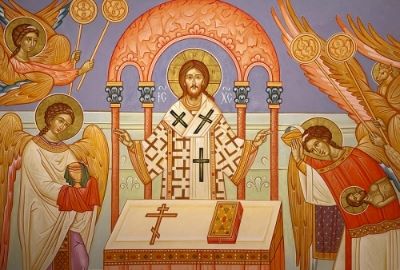
Last week we wrote about what a rite is, the different kinds of rites, and touched base on the Latin Rite.
Today we will go further by looking deeper into the Eastern Liturgical Rites. With the exception of the Armenian Rite the other following rites have derivative rites, usually of a regional or cultural nature. The four parent rites in Eastern Catholicism are the Antiochene, Alexandrine, Byzantine, and Armenian.
![Antiochia_su_Oronte[1]](http://www.magnificatmedia.com/wp-content/uploads/2015/09/Antiochia_su_Oronte1.png) Antiochene is better known as Antioch. Antioch was a Greek Roman city on the eastern side of Orantes River. The ruins of the old city lies near the city of Antakya, Turkey which lends it’s name today as Syrian Antioch. St. Peter the Apostle is the one that established his first see in Antioch.
Antiochene is better known as Antioch. Antioch was a Greek Roman city on the eastern side of Orantes River. The ruins of the old city lies near the city of Antakya, Turkey which lends it’s name today as Syrian Antioch. St. Peter the Apostle is the one that established his first see in Antioch.
The Antiochene Rite consists of two separate branches; the West Syrian liturgies and the East Syrian liturgies. The West Syrian Liturgy is also divided into three separate rites. The first, the Maronite Rite which is primarily in Lebanon and using the Aramaic tongue spoken by Our Lord Himself. The second, the Syriac Rite which was originally centered in Antioch. Third, the Malankarese Rite an adapted form of the Syriac Rite used on the Malabar Coast of India by Catholics who returned to the fold of the Roman Church in 1930. Then there is the East Syrian liturgies. They are, one, the Chaldean Rite, developed in ancient Persia or the Mesopotamia region and two, the Malabarese Rite which is used in India. These Christians were evangelized by St. Thomas the Apostle and they are better known as St. Thomas Christians.
Alexandrine is better known as the liturgy used by the church in Alexandria in Egypt and because St. Mark apostolicized this region it became known as the “Liturgy of St. Mark”. This rite became known as the Coptic rite because Copt in Arabic and Greek translates to the word Egyptian.
The Byzantine Liturgy, the Greek Rite, is the root of these following rites. One, Melkite Rite, two; Russian Rite, three; Ukrainian Rite. All of these rites primarily use what is called the “Divine Liturgy of St. John Chrysostom”, though with minor differences in their ritual. The Greek Rite uses the classical form of the tongue. For instance, the Russian and Ukrainian Rite uses the old Slavonic, an old form of the once regional language. The Melkite Rite, which is used in the Middle East, uses Arabic as well as some Greek language while here in the United States, English is also used.
Learn more about the origins of the origins of The Eastern Liturgical Rites today, October 1st, 2015, on Magnificat Radio from 6am – 8am and from 3pm – 5pm CDT, USA during Louis Tofari’s show, Learning about the Roman Liturgy, at www.magnificatmedia.com ~ Living Our Faith.
Visit Louis Tofari’s site here: Romanitas Press
The following is music from the Eastern Liturgical Rite.
